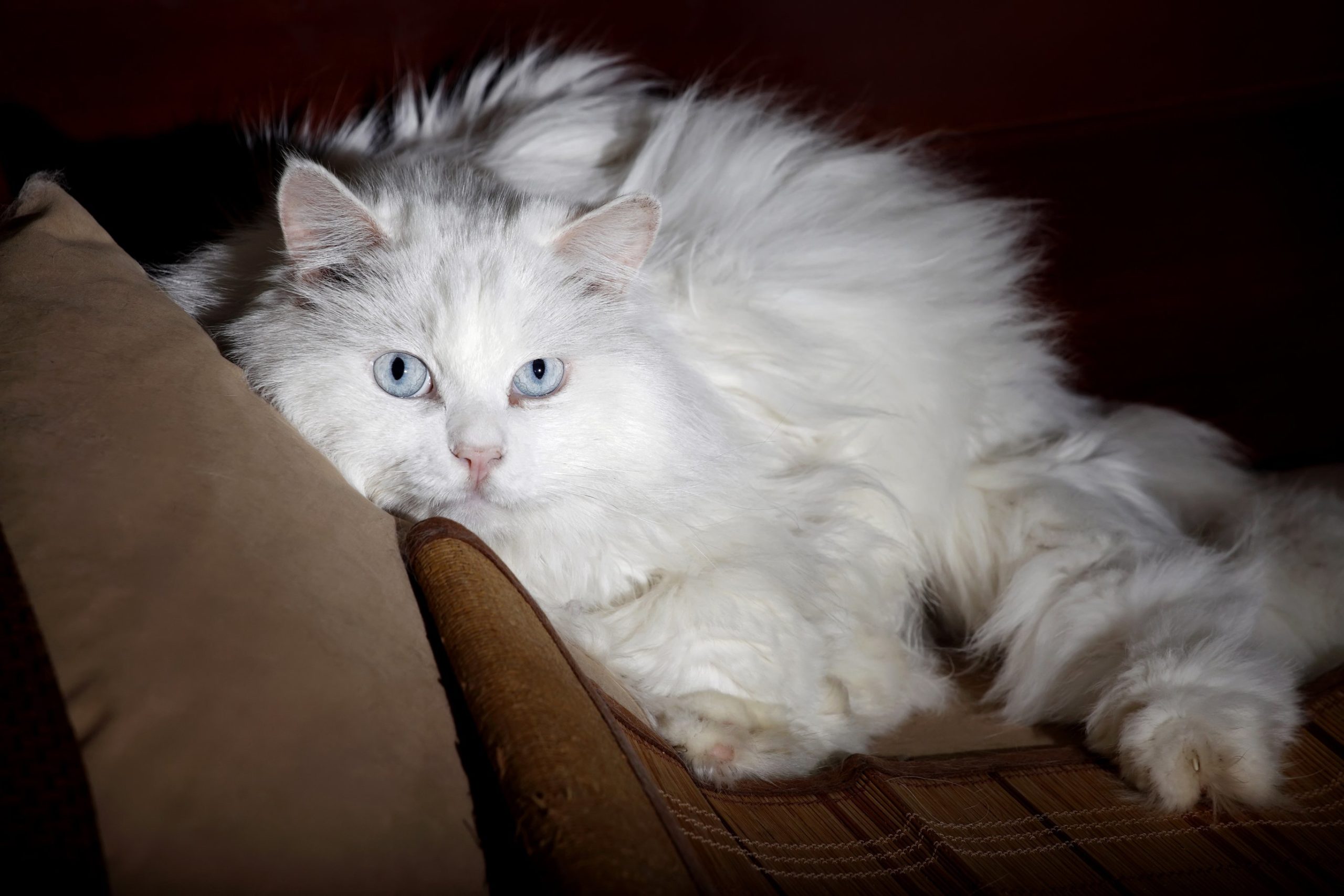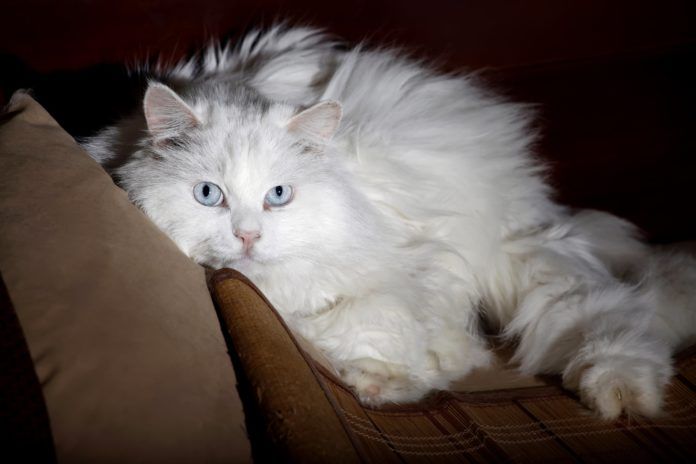Dreamstime.com

Stub your toe, bump your head or cut your thumb while peeling an apple, and you’re apt to give out a yell that will clearly indicate you’re in pain. And then you might spend the next hour or two discussing the incident, lamenting it and seeking the solace of those who are near and dear to you.
When it comes to dealing with pain, however, our cats aren’t like that. Eons of experience in the wild have taught cats to conceal any sort of physical disability as best as they can from potential enemies. A part of their natural survival instinct is to hide the fact that they have been injured or otherwise weakened, which could render them susceptible to attack by a predator.
“Because cats cannot speak for themselves,” says Michael Stone, DVM, a clinical professor of small animal medicine at Tufts, “owners must look for signs of pain that they might be exhibiting. And then the owners must act as their cats’ advocates.”
Observation is key
How can an owner tell whether a cat is suffering pain in his bones, joints, ligaments, muscles or internal organs? According to Dr. Stone, “Observing a cat’s behavior is the most accurate method of evaluating his pain. An owner should note both the absence of normal activities and the development of new behaviors that may emerge as a response to pain.
If a cat is experiencing pain, the owner is apt to notice behavioral changes such as a decline in grooming, a tendency to hide and an abnormal sensitivity to normal handling.” Other possible signs include soiling outside the litter box, aggression when approached, unusual posture, uncharacteristic vocalization, an altered sleep pattern and reduced appetite.
Although these behaviors — and many others as well — may be prompted by pain, they may also be exhibited by healthy, happy cats that are free of physical discomfort. Consequently, the signs should be considered by an animal’s owners in the context of what is normal for that individual cat. At the same time, says Dr. Stone: “You can assume that your cat might be experiencing pain — even if he’s not exhibiting dramatic behavioral signs — if you notice him withdrawing from normal activity, showing lameness, or having difficulty jumping onto or off of elevated surfaces.”
A veterinary exam is in order
If an owner observes any such indicators of pain, the affected cat should be examined by a veterinarian. Although behavioral signs may be more telling than physiologic signs, a veterinarian will examine the cat for such potential indicators of a significant disorder as abnormal heartbeat, body temperature, respiratory rate and blood pressure, as well as an elevated level of certain stress hormones in the patient’s blood. The veterinarian is also likely to ask the owner about such details of the patient’s routine activities as the cat’s typical eating and grooming habits, his normal sleep patterns, the use of his litter box and the way he typically interacts with his owners and other animals in the household.
Pain serves a purpose
Unpleasant as it is, pain can play an important role in maintaining a cat’s well-being by alerting her brain to the fact that something, somewhere in her body, has gone awry and needs attention. Pain is a protective mechanism, enabled by sensitive receptor cells located throughout the body — in the skin, the bones, joint surfaces, artery walls, just about everywhere.
These specialized cells — which are stimulated by harmful forces or substances (pressure on a limb or internal organ, extreme heat or cold, the consumption of a poisonous substance, inflammation in a joint, for example) — transmit electrical impulses along nerves to the spinal cord and then to the cat’s brain.
In some situations, the initial five or 10 minutes of pain can be life-saving, due to increased cardiovascular output, certain muscle reactions and the triggering of the fight-or-flight instinct that will prompt a cat to escape from the source of the pain. But if the pain persists for an appreciable length of time, or occurs without a readily identifiable cause, it will serve no positive purpose.
Types of pain
Dr. Stone notes that feline pain, like human pain, can be acute (or adaptive) — the kind of intense but comparatively short-term discomfort that may be caused, for example, by a bite wound or surgical incision. Or it can be chronic (or maladaptive), persisting constantly or intermittently for an extended period as a gradually intensifying consequence of an injury or long-standing physical disorder, such as severe dental disease or arthritis.
Pain can also be categorized as visceral, neuropathic or musculoskeletal. “Visceral pain means that it is deep within the body,” says Dr. Stone. “The discomfort might stem from, for example, intestinal upset or pancreatitis. Neuropathic pain originates from direct nerve involvement, resulting from trauma to the head, say, or a slipped vertebral disc. And musculoskeletal pain can result from such problems as a sprain, a muscle strain, or arthritis.”
During the examination
“I will use gentle manipulation to assess a cat’s reluctance to having a particular area touched,” says Dr. Stone. “Some animals are more stoic than others. Some are more timid. I try to integrate my findings with what the owner is noticing at home.”
What methods and pharmaceuticals will a veterinarian typically use or suggest for the treatment of feline pain? “Drugs, physical therapy, cold or heat treatment, ultrasound and dietary adjustment therapy for weight control might be used,” says Dr. Stone, “as well as resolution of a specific underlying problem, such as removal of a painful growth. Each cat’s treatment will be individualized.”
Two types of analgesics
Currently, feline pain is treated primarily with two types of analgesics: opioids, which function as numbing agents that dull pain; and nonsteroidal anti-inflammatory drugs (NSAIDs), which reduce inflammation. A veterinarian will select a painkiller that is appropriate, depending largely on the source of the pain, the intensity of a cat’s discomfort, and the length of time that is prudent and desirable for an animal to be given the drug.
Owners must be aware that some pain-relieving medications that have been formulated for humans (such as Tylenol) could be fatal to a cat and must never be used to treat feline pain. In fact, no painkiller should be given to a cat unless the medication has been specifically prescribed by a veterinarian, and that you have been instructed on how and when to administer it. Medications for dogs can sometimes be dangerous for cats, as well.
Multimodality treatment
Regarding current progress in the treatment of feline pain, he adds: “Longer-lasting pain medications have recently become available; the use of acupuncture is becoming more common as well. Overall, multimodality treatments, which use a combination of drugs and techniques, have become the new approach to pain control.”
Dr. Stone advises owners never to ignore clear indications that a cat may be experiencing sudden-onset, acute pain; veterinary consultation should be pursued without delay. Owners should also be aware that a cat with long-lasting chronic pain may develop coping strategies for concealing discomfort; in that case, a routine veterinary checkup could reveal the presence of osteoarthritis or some other source of persistent pain.
The good news is that with proper veterinary care and at-home treatment by her owner, a cat’s acute or chronic pain can be significantly reduced, emphasizes Dr. Stone. Indeed, he says, “Feline pain can be lessened with appropriate care in almost every situation.” — Tom Ewing




